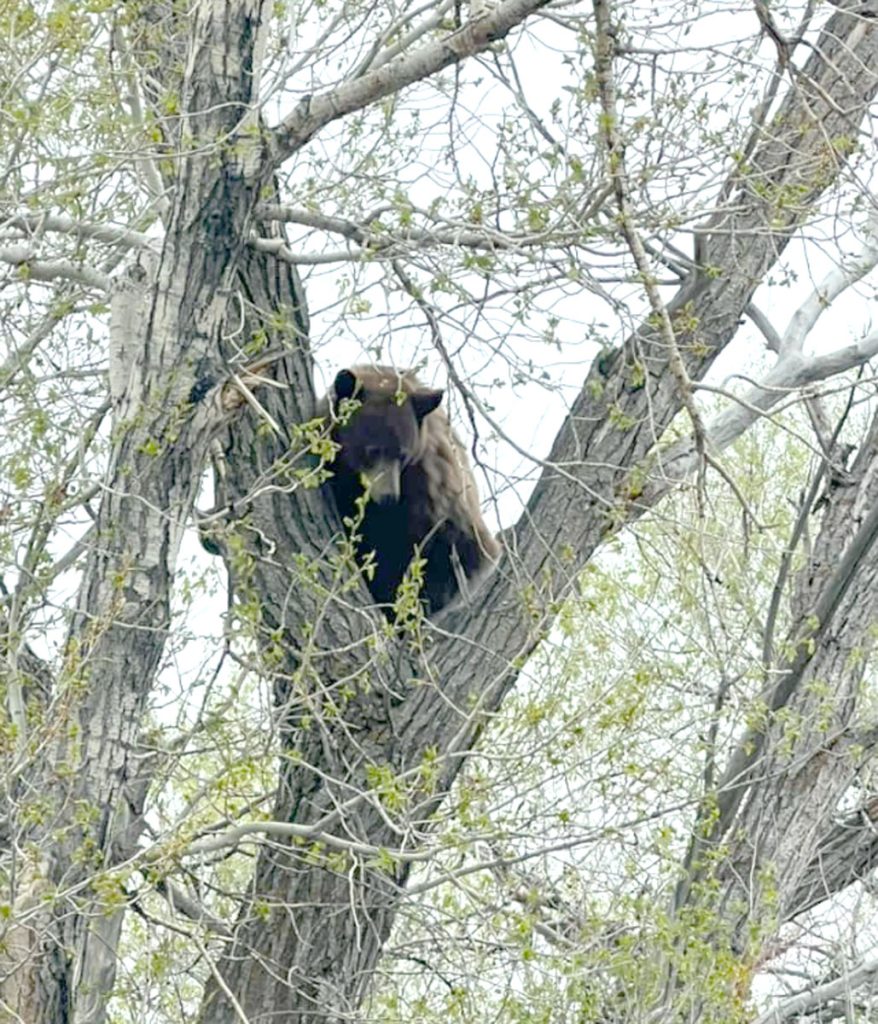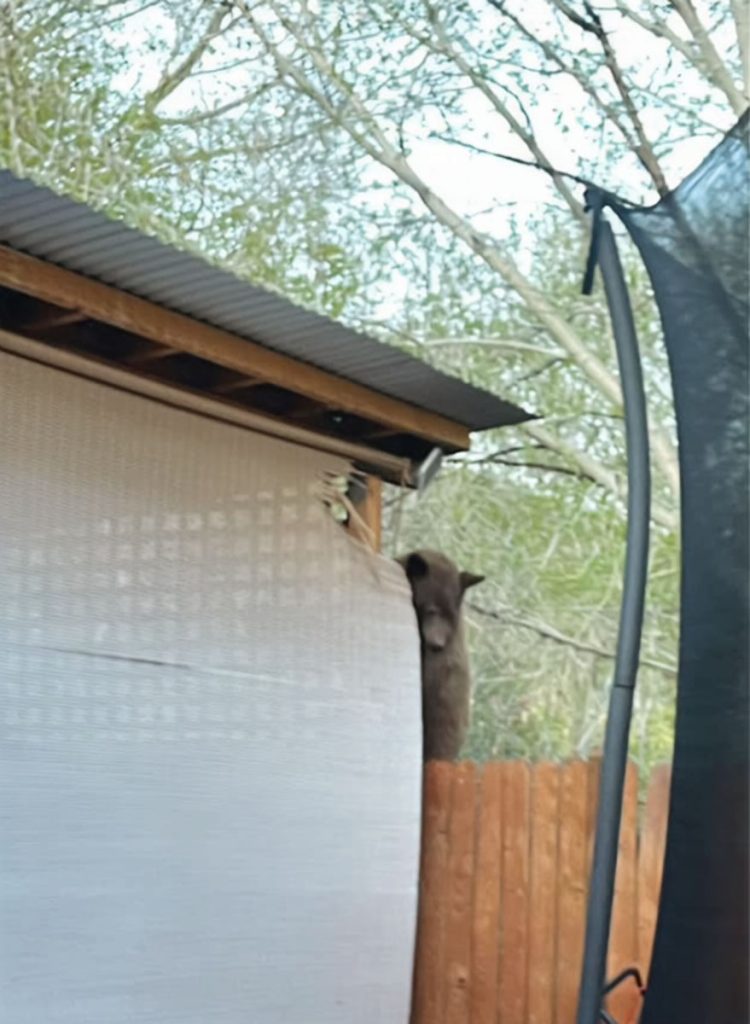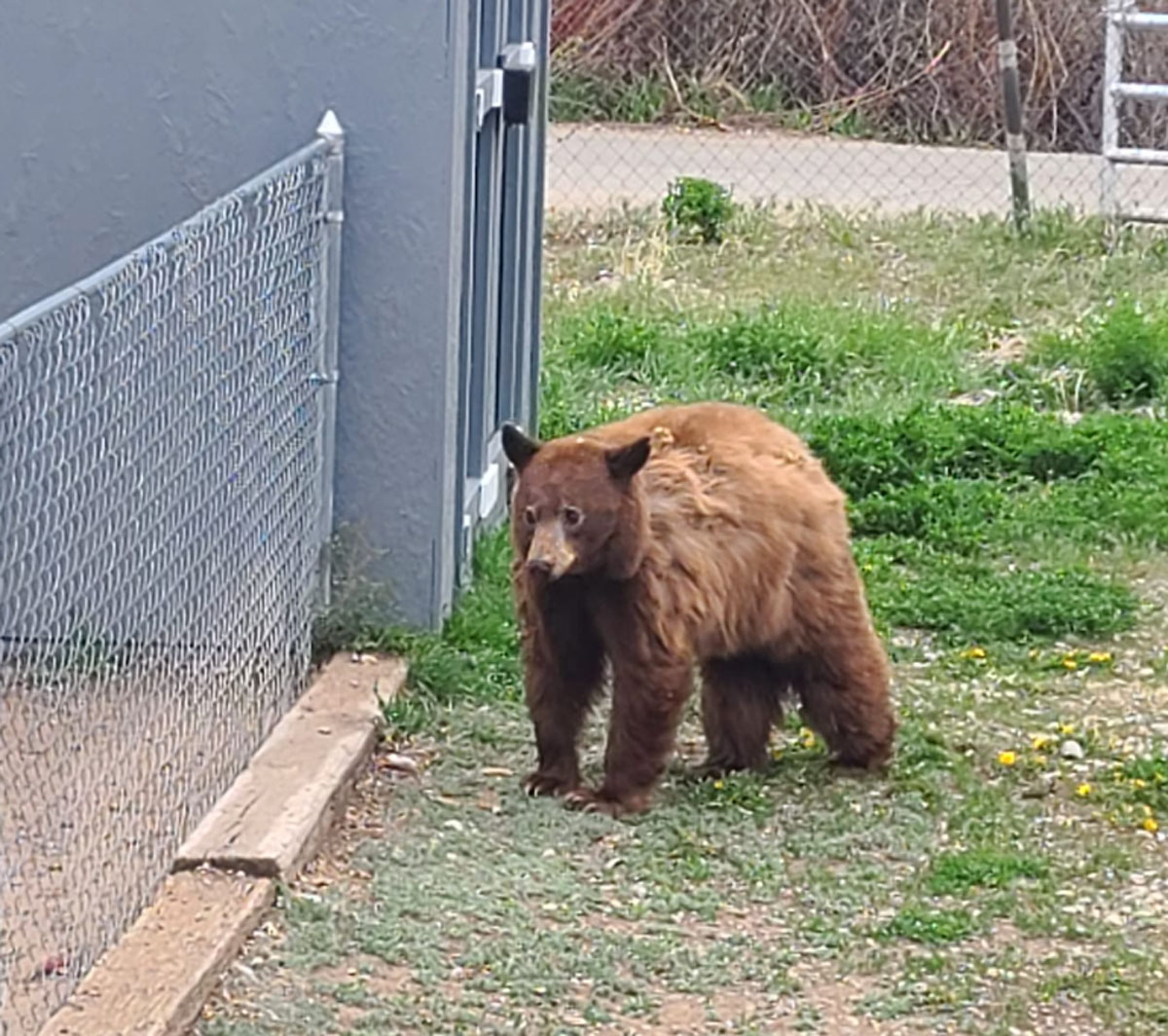

Hibernation season is over and animals who were slumbering during the winter months are up, and they’re working hard to replace the 20 to 50 percent of body weight they lost during their hibernation.
Several bear sightings have been reported across the northern Taos County area, including North Kiowa Road, Eagle Rock Lake, and at Molycorp Field. While the bears have not been reported as aggressive, they have been observed to be hungry and are in search of food.
The New Mexico Department of Game and Fish has issued the following recommendations to keep you and your loved ones safe
- Avoid outdoor activities such as running or hiking at or around dawn and dusk, when predators are most active.
- Supervise children when they are outdoors and keep them close when hiking.
- Eliminate hiding places for predators. Remove enough vegetation to detect large predators in your yard and make it difficult for them to hide or approach unseen.
- Enclose open spaces below porches and decks.
- Install outside lighting (preferably motion sensors). Illuminate walking areas.
- Avoid planting non-native shrubs and plants. These can attract prey that predators may follow.
- A leash will help protect your pet and usually is required by law. Pets are easy prey. Bring pets inside at night. If they must stay outside, confine them in a kennel with a secure roof.
- Do not feed pets outside. Pet food can attract predators and prey.
- Store all garbage securely. Most predators will not cause damage and will move on if abundant food cannot be found.
When a predator detects your presence, it usually will leave the area before you know it’s there. Attacks are rare, and each situation is different and will depend on the predator, the terrain and how the person reacts. Though steadfast rules often don’t apply, these suggestions will reduce the risk of attack:
- If you see a predator that hasn’t seen you, remain calm and leave the area. Talk loudly as you move away to make your presence known.
- Stop and back away slowly while facing the predator if this can be done safely. Avoid direct eye contact. Do not run; this may stimulate the predator’s instinct to chase and attack. Allow the predator as much room as possible for it to leave.
- Appear as large as possible. Raise your arms. If wearing a jacket, open it and raise it above your head. If with small children, pick them up to protect them and prevent panic and running.
- Never approach a wild animal. Predators are unpredictable but will avoid confrontation unless forced.
- Watch for young. Coming between a female and her young is dangerous. lf a predator’s young are nearby, move away while remaining alert for other young and adults in the area.
- Convince the predator you are not prey. If a predator approaches or behaves aggressively, arm yourself with a large stick, throw rocks or sticks and speak loudly and firmly. Convince the predator that you are dominant and a danger to it.
- Fight back if a predator attacks. Fight aggressively and use any weapon available, such as rocks and sticks, a backpack, hat or jacket or your bare hands if necessary.
To request assistance from a NM Game and Fish Conservation Officer during normal business hours, you can call 1-888-248-6866. If you need to reach out after hours, contact the New Mexico State Police Dispatch at (505) 841-9256.



